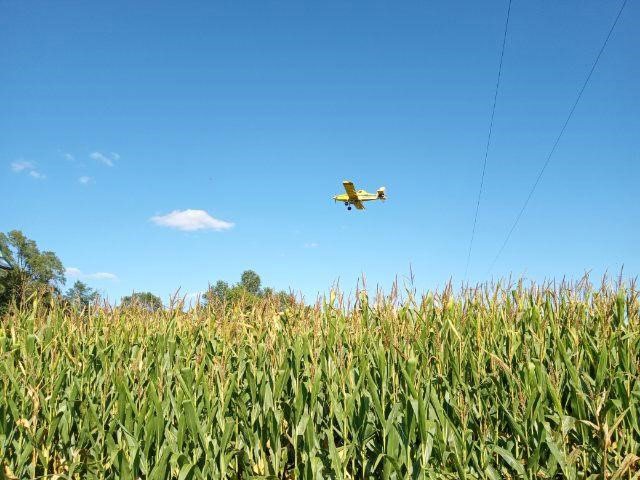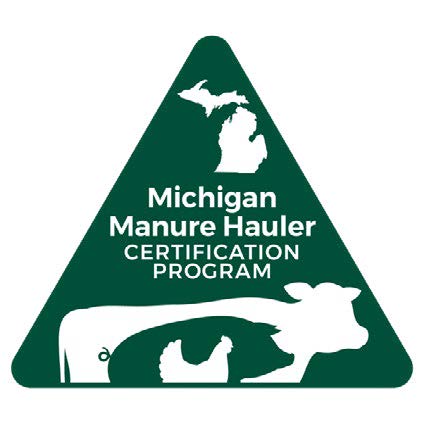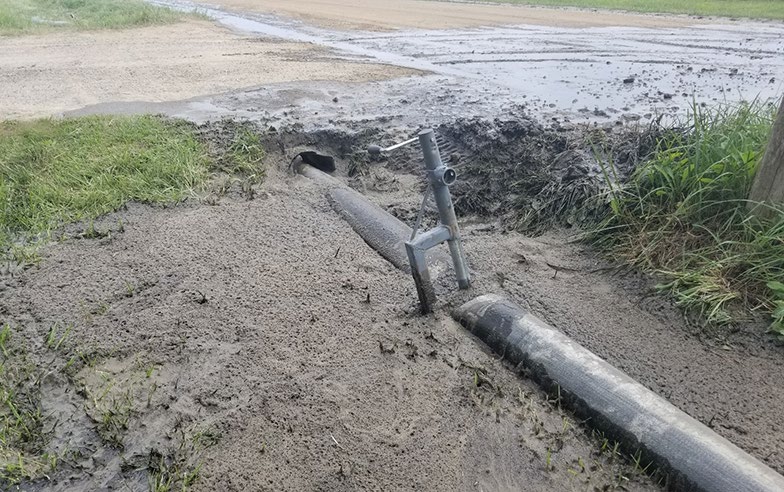
MSU Extension Supports Agriculture's Nutrient Management Efforts for Clean Water
DOWNLOADJune 20, 2024 - Michigan State University Extension
Impacts
MSU Extension increases farmers’ success while protecting the environment, ensuring food safety, reaching new markets and advancing agriculture through applied research. Agriculture is now one of the fastest growing sectors of the Michigan economy.
- 21% of the world's surface freshwater is found in the Great Lakes (EPA, 2023).
- 40% by 2025 is the goal that the Michigan Lake Erie Domestic Action Plan is aiming for in reducing phosphorus entering Lake Erie (State of Michigan, 2018, p.5)
Priority Areas
Having clean water is important to our health and the health of the world around us. Farmers use nutrient management to keep the nutrients that are used to grow our food in the soil and out of the water where it can cause problems such as harmful algal blooms and fish kills. Michigan State University (MSU) Extension’s efforts benefit water quality within and beyond our state by helping to maintain the integrity of the Great Lakes. Research, education and outreach efforts in the Western Lake Erie Basin, Saginaw Bay and Macatawa Watershed contribute to meeting water quality goals across Michigan. MSU Extension educates farmers on ways to reduce nutrient and sediment inputs in the Great Lakes.
St. Joseph River Watershed Project Reduces Phosphorus Loss from Farm Fields to Lake Erie
Excess nutrient loading is the primary water quality issue in the Upper St. Joseph River Watershed and the broader Western Lake Erie Basin (WLEB). Nutrient loading is natural, but when it exceeds the ecosystem’s ability to process it, problems can occur. A significant portion of the phosphorus contributing to harmful algal blooms in Lake Erie originates from surface and subsurface losses of commercial and organic fertilizer applied to agricultural land in the watershed. High nutrient and turbidity levels may also be the cause of inadequate dissolved oxygen levels found throughout the WLEB.

Although the St. Joseph River has its impairments from excess nutrient loads, a diverse community of mussels has been discovered in the East Fork of the West Branch. The watershed is also home to the copper-bellied water snake, a federally threatened species, and the massasauga rattlesnake.
MSU Extension led a water quality project to reduce agricultural nutrients being lost from agricultural fields into the St. Joseph River and eventually Lake Erie. The Upper St. Joseph River of Lake Erie watershed, consisting of 343,468 acres, is located mainly within southern Hillsdale County, but it also crosses state lines into Ohio and Indiana. The major land use within the watershed is agriculture, totaling 68%. The major pollutant source targeted by this project is phosphorus from agricultural fields; however, nitrogen and sediment will also be affected. The project aimed to reduce the phosphorus load by 20%.
The most popular practices with producers to improve water quality in the watershed have been cover crops and nutrient management. There were 3,948 acres of cover crops installed in the watershed and 1,433 acres of nutrient management planning has been contracted. Approximately 289.4 tons of sediment, 664 pounds of nitrogen and 2363 pounds of phosphorus have been prevented from leaving farm fields.
2023 Michigan Manure Management Summit
Manure management on farms is important to keeping groundwater safe. The Michigan Manure Hauler Certification Program works to reduce risks of spills and other accidents by providing manure management information and nonregulatory inspections of manure application equipment.

The Michigan Manure Management Summit provides updates on the science, regulations and best practices for managing manure when it is stored, transported and applied to agricultural land. The annual event, hosted by MSU Extension and Michigan Farm Bureau, is specifically designed to increase manure management knowledge among those who haul and apply manure and demonstrate that agriculture professionals can voluntarily engage in environmental stewardship. The summit also provides required continuing education credits for individuals who participate in the Michigan Manure Hauler Certification Program.
In total, 111 people attended the 2023 Michigan Manure Management Summit. Ninety-five percent of post-survey respondents indicated that their knowledge about manure management increased because of the education offered at the summit. Forty-nine percent of respondents intended to make changes to their practices based on what they learned.
MSU Extension helps farmers learn environmentally sound business practices that are also profitable and efficient. This certification program helps maintain a safe water and food supply for residents and consumers while also creating efficiencies that lead to better use of time, money and bolstering agricultural jobs.

"The weather technology that was touched on was new to me and very interesting." -Michigan Manure Management Summit participant
"I learned that safety around confined spaces is important on my operation." -Michigan Manure Management Summit participant
For more information, visit https://www.canr.msu.edu/animal-agriculture/Manure-Hauler-Training/michigan-manure-management-summit-proceedings.
References
State of Michigan. (2018). Domestic action plan for Lake Erie. https://www.michigan.gov/egle/-/media/Project/Websites/egle/Documents/Programs/WRD/AOC/Domestic-Action-Plan-Lake-Erie.pdf
U.S. Environmental Protection Agency (EPA). (2023). Great Lakes facts and figures. https://www.epa.gov/greatlakes/great-lakes-facts-and-figures



 Print
Print Email
Email




